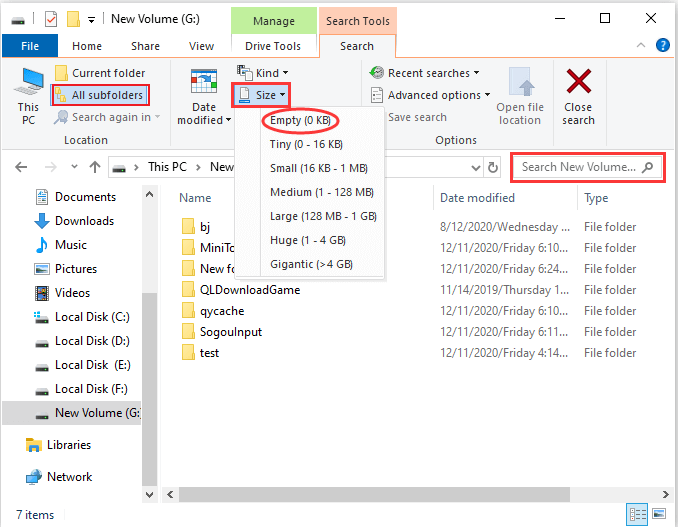
Hi,
You can quickly find the empty folders using below method.
Press Win + E to open File Explorer.
Click on the Search Tab to open the Search Menu
Set the Size filter to Empty, and be sure that the All subfolder feature is checked

After the search ends, it will display all files and folders that do not take up any memory space
Best regards,
----------
If the Answer is helpful, please click "Accept Answer" and upvote it. Thanks.
